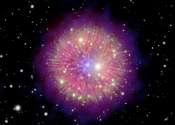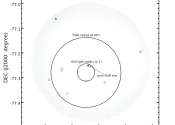Webb probes an extreme starburst galaxy
A team of astronomers has used NASA's James Webb Space Telescope to survey the starburst galaxy Messier 82 (M82). Located 12 million light-years away in the constellation Ursa Major, this galaxy is relatively compact in size ...









